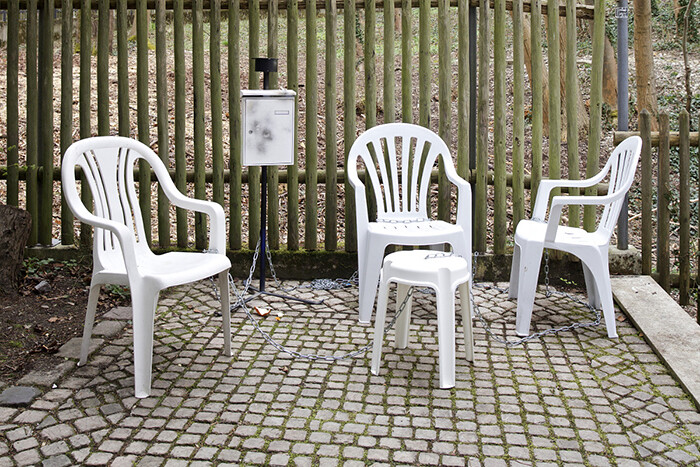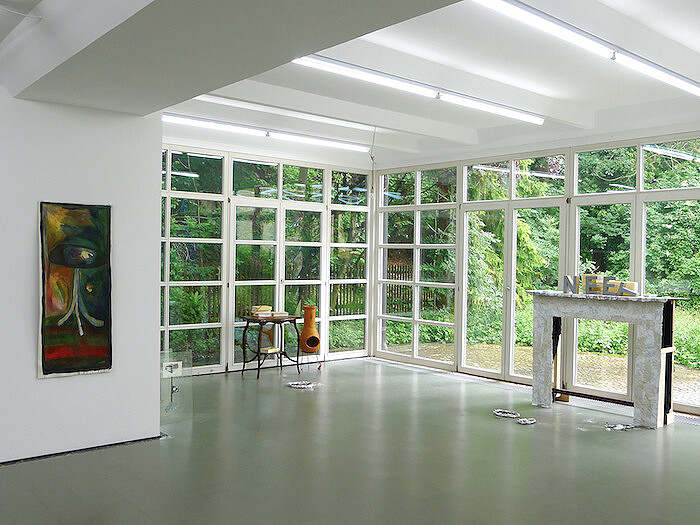Categories
Subjects
Authors
Artists
Venues
Locations
Calendar
Filter
Done
May 29, 2015 – Review
“Die Marmory Show II. Impoverishment”
Jenny Nachtigall

The protagonist of Fanny von Reventlow’s novel The Money Complex (1916) suffers from a pathological lack of cash. She is afflicted with a grave sickness of fetishism: money is a being with “whom” she had a very painful relationship that failed dramatically—hence her ailment and impoverishment. In the present times of crisis, the “money complex” no doubt still flourishes, and does so particularly well in the art world, which is host to all kinds of pathologies, promises, and Bohemian myths—chief amongst them the cryptic link between “talent” and success, of being discovered one day, if you only try hard enough. Subtitled “Impoverishment,” the second iteration of Deborah Schamoni’s “Die Marmory Show” departs from such questions of art-world success and its absence—though its itinerary is anything but sociological, or psychoanalytic for that matter. It unfolds within a narrative structure in which “impoverishment” alternates between material, social, or discursive registers. Spreading over the gallery’s two floors, garden, and courtyard, the exhibition that Schamoni co-curated with Nikola Dietrich includes works by Leidy Churchman, Shannon Ebner, Judith Hopf, Tobias Madison, Park McArthur, Manfred Pernice & Martin Städeli, Christoph Schäfer, Eric Sidner, and Peter Wächtler.
Its entry point is Manfred Pernice’s briefkastenOrion (verlorener posten) (2015). Located …
July 3, 2013 – Review
“it’s just a way to stay alive / Zukunftswahn”
Kerstin Stakemeier

Munich is a place for long shots. It lacks Berlin’s elegantly wasted charm and it is not an international youth hostel of art. Quite on the contrary, for emerging artists or for young galleries Munich is a rough patch with its incredibly high rents and living expenses. But its haute bourgeois appearance has a decidedly liberal twist. Its institutions are highly international, and some of the city’s galleries have been essential in introducing and supporting progressive and even revolutionary movements in art. Think of the group SPUR, the German branch of the Situationist International, for example, which was founded in Munich in 1958 and backed by Galerie van der Loo; or of Six Friedrich’s introduction of Andy Warhol and Minimalism; and of Rüdiger Schöttle’s role in the reception of Conceptual Art in the German context in the 60s and 70s; or of Barbara Gross’s premiering of works by Louise Bourgeois, Kiki Smith, or Nancy Spero in the 80s. All those galleries still exist in Munich today with no less reputable and rejuvenated programs. Artists here have time to develop their works—and their reputations—before exposing themselves to the permanent visibility of cities like Berlin, London, or New York.
This is what makes …